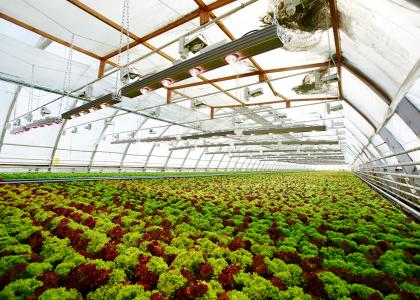The House-Passed Combined Renewable Energy and Energy Efficiency Standard
The House Provision: Sec. 9611 of the House-passed energy bill contains a renewable energy resource standard for electric utilities that allows energy efficiency, including combined heat and power systems and use of recycled energy, to qualify. Specifically, the House provision requires that utilities procure 2.75% of their electric sales from eligible resources in 2010, rising to 15% in 2020. Efficiency can meet up to 27% of each year’s target (e.g., 11% renewables, 4% efficiency in 2020). This provision is very similar to the Bingaman-Landrieu compromise prepared for the Senate floor but never voted on.
Why Include Energy Efficiency? Efficiency was included to increase utilities’ flexibility, reduce costs, and broaden support for the provision. Studies have shown that large energy efficiency opportunities are available in comparable amounts in all states, with estimates of the cost-effective efficiency resource by 2020 typically around 20% savings or more. For example, recent ACEEE studies on Florida and Texas found that cost-effective efficiency measures can, by 2023, reduce projected levels of electricity use by about 30% in Texas and 25% in Florida. Experience in numerous states shows that efficiency improvements on average cost about 3 cents per lifetime kWh saved,1 which is less than the cost of conventional electricity generation as well as most renewable options.
What Efficiency Measures Are Eligible? A wide array of efficiency measures are eligible including reductions in end-use customer electricity use, reductions in distribution system energy losses, the output of combined heat and power plants, and savings due to recycling of waste energy. End-use customer savings can be obtained by various readily available measures including efficient lighting, motors and heating/cooling equipment, improved new building designs, and industrial process improvements.
How Are Efficiency Savings Measured? Details on measuring efficiency savings will be decided by the Secretary of Energy. However, many states have extensive experience estimating efficiency savings through use of evaluation methods. Often, the energy savings from commonly used technologies can be reliably estimated through “deemed savings” formulas. Alternatively, independent evaluators may be employed to compare changes in electricity use between program participants and non-participants (thereby excluding trends in the broader market) or to review engineering estimates through spot-metering in the field and customer survey techniques. Evaluation reports are then reviewed by state utility commission staff.
State Experience: Fifteen states have established or are developing energy efficiency savings targets for utilities, sometimes combined with renewable energy targets (e.g., Hawaii and Nevada) and sometimes set separately. The first state to set efficiency targets was Texas in 1999 (in restructuring legislation signed by then Governor Bush). In the past year, legislation on efficiency targets was passed in Colorado, Illinois, Minnesota, New Jersey, North Carolina, Texas (increasing the 1999 targets), Virginia, and Washington. In New York, the Governor has set a goal of 15% savings by 2015 and the utility commission is working out the details; Maryland’s Governor has set a similar target. Other states with efficiency targets are California, Connecticut, Pennsylvania, and Vermont.
Why the Cap on Efficiency Savings? Originally this bill was a renewables-only bill, without efficiency. The 27% cap on efficiency savings was established to ensure that significant renewable energy resources will be procured; renewables requirements will be higher than the 10% target passed by the Senate earlier this decade. Energy efficiency resources are generally less expensive than renewable resources and the sponsors did not want efficiency to dilute the effect of the renewable target. Our hope is that in the future, both the overall target (15% of sales) and the efficiency cap (27% of the overall savings) can be increased.
Energy Savings: ACEEE estimates that the efficiency portion of the House provision will reduce electricity use in 2020 by about 32 billion kWh, reducing electricity bills by about $3 billion annually. These savings will also reduce greenhouse gas emissions by about 23 million metric tonnes of carbon dioxide and reduce peak power demand by more than 10,000 MW (equivalent to the capacity of 34 power plants of 300 MW each). Substantial additional savings will come from the renewable energy portion of the provision.

